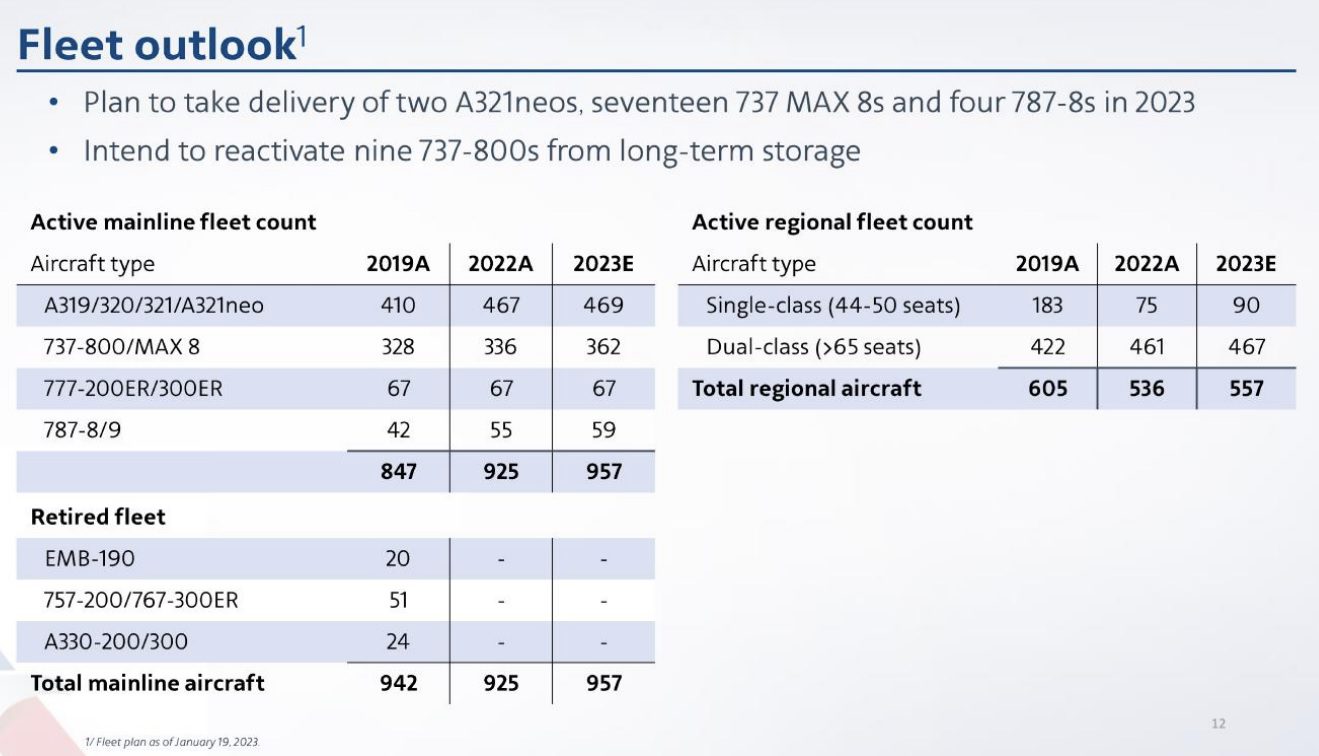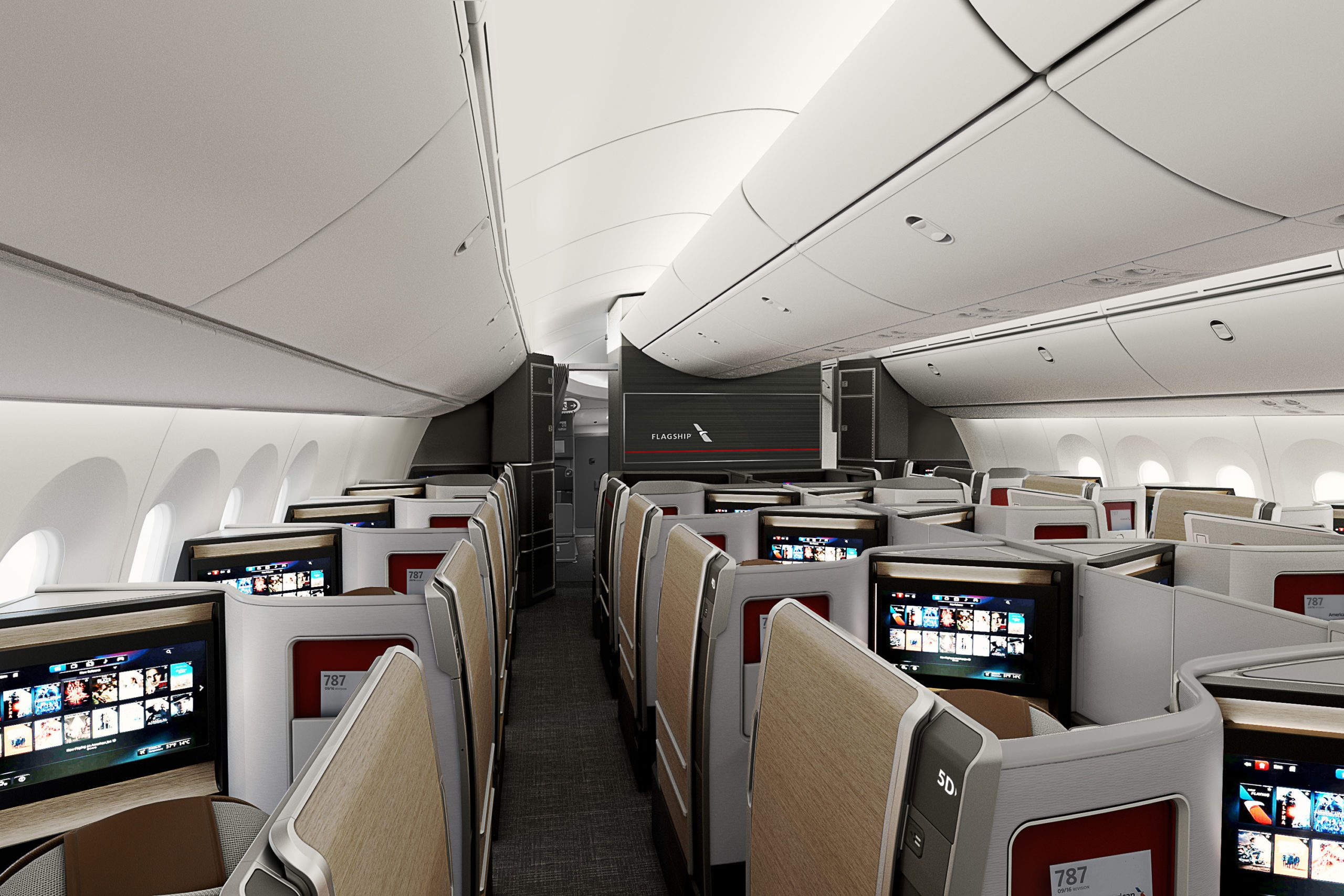American Airlines still has fewer mainline aircraft flying than they did before the pandemic. They retired their Boeing 757s, 767s, Airbus A330s (that they’ve even still been paying on) and Embraer 190s during the pandemic. And they’ve kept Boeing 737s parked in the desert.
However they’re bringing back some of those 737s this year, and will take delivery of 19 new narrowbody and 4 widebody aircraft in 2023. All told they expect to end 2023 with more active mainline aircraft than their average for 2019, but still fewer aircraft total.
That’s because so many regional jets remain parked, largely due to lack of pilots to fly them. Airline CEO Robert Isom said during the carrier’s fourth quarter earnings call that it’ll be “a couple of years” before they can grow pilot staffing to operate all of their regional jets.

These are the last 2 remaining A320neos on order. They have an order placed for 50 Airbus A321XLRs that are supposed to begin delivery next year. There are also 88 737 MAX 8s still on order. The four 787-s to be delivered this year complete that acquisition – and then next year American should start receiving the first of its 30 new Boeing 787-9s.

Coming In 2024, Credit: American Airlines
The XLRs and 787-9s will feature new business class suites with doors, and kick off the retrofit of Boeing 777-300ERs with new business class seats and the elimination of Flagship First Class.


This is one of the lowest aircraft delivery schedules for a legacy carrier in decades. The takeaway is not the low number of mainline aircraft deliveries – AA has a young enough fleet and will take delivery of enough new generation narrowbodies – A321NEOs and 737MAXs – to keep renewing its fleet on a small scale but that there are so few widebodies which says that AA really is in a very good position to pay down debt, which they are doing while also pulling back from the longhaul international market since their widebody fleet is not only considerably smaller than it was pre-pandemic but will be much smaller than DL and UA’s.
I am bullish on AA financially; as long as they can get strong revenues on their domestic network in their core sunbelt hubs – which they have more of than any other carrier than WN – they have several solid years of financial rebuilding ahead of them.
Retiring the 757s and 767s was a big mistake. Those aircraft have no replacements domestic destination wise, also for Europe. Flying A321-XLRs overseas is not going to earn more market share. Passengers will compare the A321-XLR to a B737 and be like no way I am flying that to Europe. Passengers did not really care for B757s for trans Atlantics. I can hear the complaints right now.
With AA having the largest/strongest domestic network of any legacy carrier, it would make sense to leverage that with the strongest international network, not the smallest. Their superior domestic network feeds their international more than any legacy carrier, but they are walking away from that lucrative business. The definition of insanity!
Narrowbody planes to Europe are a non-starter. The previous commenter noting that the retiring of 767 was clearly a mistake with no 787 replacements. ORD used to have 767s to MIA, DFW, and PHX–three routes I ride/rode frequently. AA needs to re-dedicate its incoming widebody 787s to its major hub connections.
Could AA even reintroduce some of those 737s without retrofitting them with Kodiak?
Between AA’s block 1 787-9s and the 787-9s with the new teased 2024 cabin, will AA take 787s with an intermediate interior based off the block 2 787-8s?
If Boeing had delivered the 787-8’s on time, AA would have been stronger over the Atlantic but the production delays forced AA’s hand. The A330’s weren’t a good fit and AA has stronger JV with IAG (BA, IB) and Japan, Qantas then some other US carriers so why not use their aircraft. I think with the XLR’s AA can revamp their trans-con, and South American service and return to pin-point some seasonal European service out of NYC and PHL. While not up to DL and UA’s levels, AA hits the main cities and their partners have excellent transfer opportunities (give me Heathrow any day over Amsterdam). AA is the airlines of the Americas first and formost and didn’t have the Pan Am and Northwest routes advantage that UA and DL got. So a strong OneWorld network is their strength for Europe and the Pacific.
If AA is going to use the XLR’s for international flights I hope they would have IFE’s on board their planes. It’s already crazy flying a narrow plane long distance.
A321 XLRs are a big mistake. I was a regular 767 flyer from MIA to MVD and NOT going to fly in a small cabin and small toilet plane. Huge mistake…
Long haul needs SPACE
A321 xlr lacks of it…